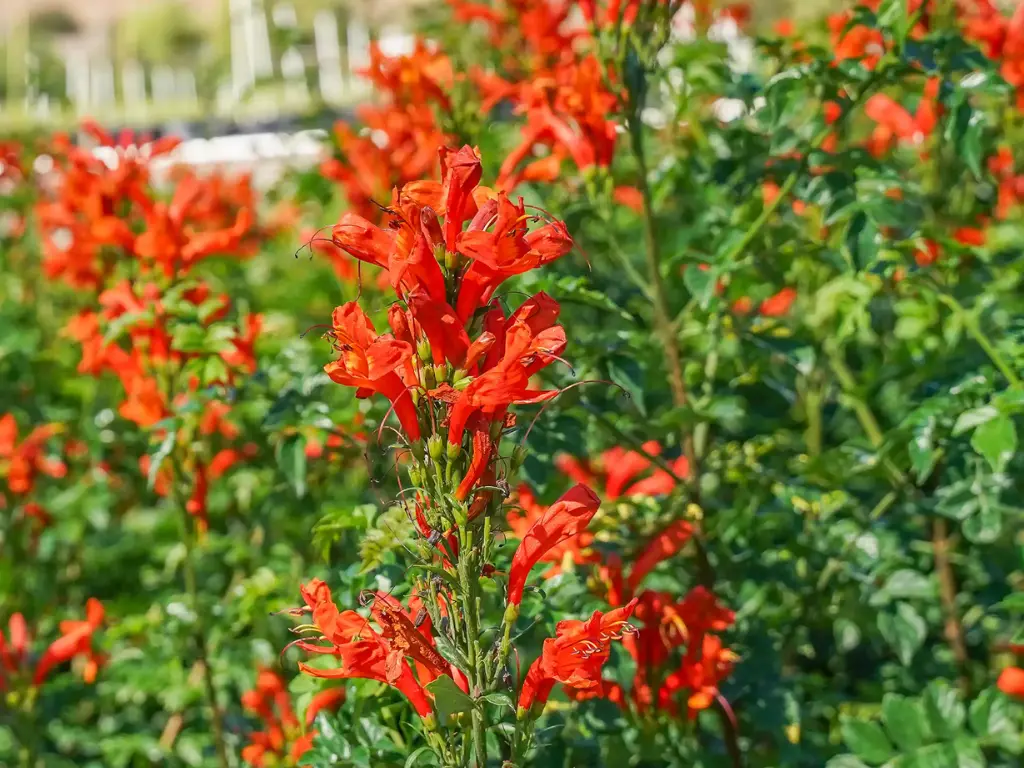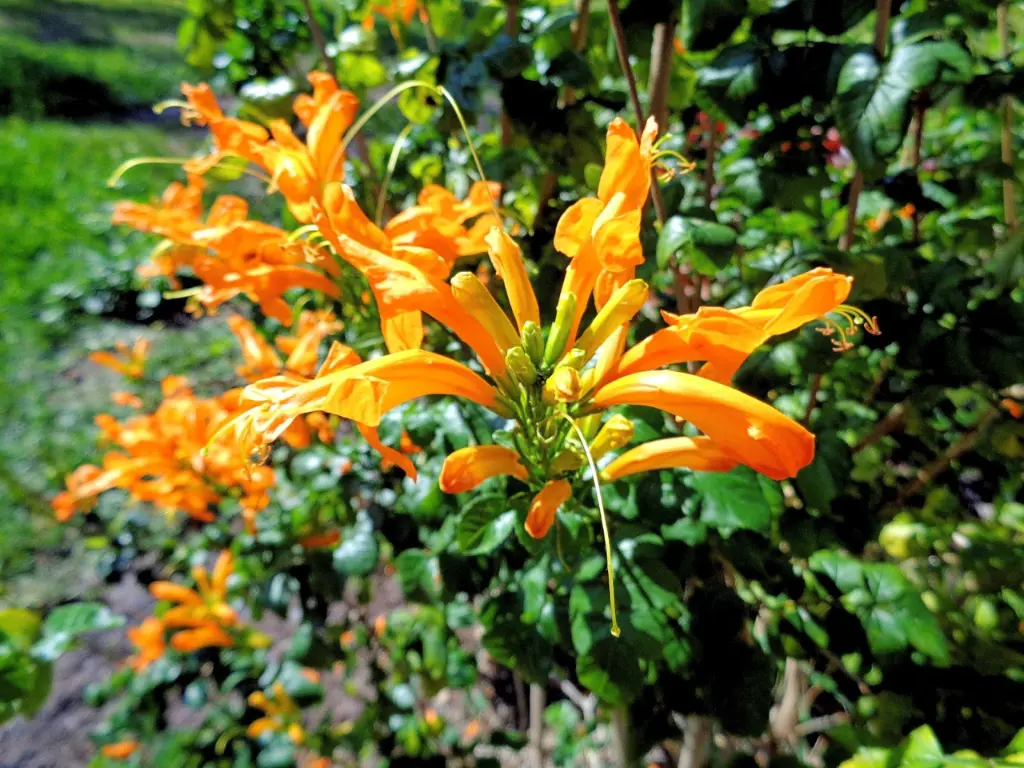If you’ve ever wondered when Cape Honeysuckle flowers will grace your garden with their vibrant colors, you’re not alone. Many garden enthusiasts are eager to understand the blooming cycle of this striking plant, known scientifically as Tecoma capensis. Whether you’re a seasoned gardener or a beginner looking to add a splash of color to your garden, knowing when Cape Honeysuckle blooms and how to care for it is key to ensuring a successful and thriving garden display.
In this guide, we’ll cover everything you need to know about the Cape Honeysuckle blooming season. From the ideal growing conditions to tips for encouraging flowers, you’ll find practical advice to make sure you’re ready when those beautiful blooms appear. Let’s dive into the world of Cape Honeysuckle, and let me help you unlock the secrets to a beautiful, vibrant garden!
For more detailed care tips on how to properly grow and care for your Cape Honeysuckle, visit our full Cape Honeysuckle Care Tips guide.
What is Cape Honeysuckle and Why Does It Bloom?

Cape Honeysuckle, scientifically named Tecoma capensis, is a fast-growing, evergreen shrub that thrives in warm climates. Native to South Africa, it’s known for its stunning tubular flowers that come in shades of orange, red, and yellow. These vibrant blooms not only add a burst of color to any garden but also attract hummingbirds and butterflies, making it a favorite among wildlife enthusiasts.
What makes Cape Honeysuckle so special is its ability to bloom prolifically in the right conditions. But when does this happen? Let’s take a closer look at the blooming season and the factors that affect it.
When Does Cape Honeysuckle Bloom?
Cape Honeysuckle flowers generally bloom in the warmer months, typically from late spring through summer. The blooming season can last for several months, often peaking during the height of summer. However, the exact timing can vary depending on several factors, including the climate, location, and care the plant receives.
-
In warm climates like California and Florida, Cape Honeysuckle tends to bloom in late spring to early summer.
-
In cooler climates, blooming may be delayed or less frequent, but with the right care, you can still expect a wonderful show of flowers.
The plant’s age also influences the timing of blooming. Young Cape Honeysuckle plants may take a year or two to reach full blooming potential, while mature plants typically bloom more reliably.
Factors That Affect Cape Honeysuckle Blooming Season
While Cape Honeysuckle is known for its ability to thrive in warm, sunny conditions, several environmental factors influence its blooming season:
1. Temperature and Climate
Cape Honeysuckle thrives in warm climates with temperatures ranging from 60°F to 85°F (16°C to 29°C). If the plant experiences cooler temperatures or frost, its blooming may be delayed or it may not bloom at all. For those living in colder regions, it’s recommended to grow Cape Honeysuckle in pots so it can be moved to a warmer area during the winter.
2. Sunlight Exposure
As a sun-loving plant, Cape Honeysuckle needs full sun for at least 6 hours a day to produce its stunning blooms. Insufficient sunlight can lead to a lack of flowers and poor overall plant health. Make sure you plant your Cape Honeysuckle in a sunny spot for the best blooming results.
3. Watering and Soil Conditions
Cape Honeysuckle prefers well-draining soil and moderate watering. Overwatering or poorly-drained soil can cause root rot, which can stunt growth and prevent blooming. To keep the plant healthy, water it deeply but infrequently, allowing the soil to dry out between waterings.
4. Fertilization
Fertilizing Cape Honeysuckle regularly during the growing season can help encourage more blooms. A balanced, slow-release fertilizer works best for this plant. However, avoid over-fertilizing, as this can promote foliage growth at the expense of flowers.
How to Care for Cape Honeysuckle for Best Blooms

Proper care is essential for ensuring that your Cape Honeysuckle produces vibrant flowers year after year. Here are some key tips for keeping your plant healthy and blooming:
1. Choosing the Right Location
For Cape Honeysuckle to thrive, choose a location that receives full sun for most of the day. This plant needs plenty of sunlight to fuel its growth and bloom production. Avoid planting it in shaded areas, as it may result in sparse flowering.
2. Pruning and Maintenance
Regular pruning is essential for encouraging dense, bushy growth and better blooming. Prune Cape Honeysuckle in early spring to remove any dead or damaged growth and to shape the plant. Be sure to remove spent flowers throughout the blooming season to encourage more buds to form.
3. Watering and Soil Care
While Cape Honeysuckle is relatively drought-tolerant, it still requires consistent moisture to produce healthy blooms. Be sure to water it regularly, especially during dry spells, but never let the plant sit in waterlogged soil. Well-draining soil is crucial to prevent root rot.
You may like:
- How to Get Passionflower to Bloom: Expert Tips for Vibrant Flowers
- Expert Tips to Get Bougainvillea to Bloom Year-Round
- 10 Beautiful Late Spring Flowers That Bloom in May
Common Problems and Solutions
Even with the best care, Cape Honeysuckle may face some common issues that can affect its blooming season. Here’s how to tackle them:
1. Why Isn’t My Cape Honeysuckle Blooming?
If your Cape Honeysuckle isn’t blooming, there could be a few reasons for this:
-
Insufficient sunlight: Ensure the plant is getting at least 6 hours of direct sunlight.
-
Excessive fertilization: Too much fertilizer can lead to leafy growth rather than flowers.
-
Improper watering: Overwatering or underwatering can stress the plant and hinder blooming.
2. Pests and Diseases
While Cape Honeysuckle is relatively pest-resistant, it may still attract aphids or scale insects, especially in humid climates. Regularly inspect your plant for pests and treat them promptly with natural remedies like neem oil.
Conclusion
Cape Honeysuckle is a beautiful, low-maintenance plant that can add incredible color and vibrancy to your garden. By understanding its blooming cycle and providing the right care, you can enjoy a spectacular display of vibrant flowers year after year.
To summarize, Cape Honeysuckle generally blooms in late spring through summer, depending on the climate and growing conditions. Ensuring it receives enough sunlight, water, and the proper care is key to encouraging blooms. And remember, pruning and fertilizing your plant will help it thrive and produce an even more spectacular display!
Frequently Asked Questions (FAQs)
-
When does Cape Honeysuckle bloom in the United States?
-
Cape Honeysuckle blooms from late spring to summer, depending on the region. Warmer climates like California will see blooms earlier, while colder climates may have a later blooming season.
-
-
What conditions are ideal for Cape Honeysuckle blooming?
-
The ideal conditions are full sun, well-draining soil, and moderate watering. Avoid excessive fertilizing, as it can stunt blooming.
-
-
How can I encourage Cape Honeysuckle to bloom earlier?
-
Ensure the plant is in a sunny location, prune regularly to remove dead flowers, and avoid over-fertilizing. Providing enough water and nutrients will also promote earlier blooming.
-
-
Can Cape Honeysuckle bloom in cold climates?
-
While Cape Honeysuckle prefers warm climates, it can be grown in colder areas by planting it in pots and moving it indoors during the winter months.
-
By following these simple guidelines, you’ll be well on your way to creating a vibrant, flourishing garden with Cape Honeysuckle as the star of the show. Happy gardening!
